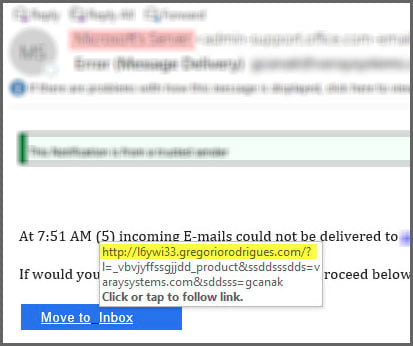Today spam and phishy looking emails are part of everyday life but what if there is an email that seems somewhat legit? For instance, what if your Grandma is really stuck in Mexico and needs you to transfer her $1,000? What would you do? Or, what if that past due email notice from the electric company might actually have some kind of merit? Well, we put together these 4 telltale signs that will help you determine if you should start on that wire transfer or purchase that gift card. In 2017 over 150,000 reports were submitted to the Federal Trade Commission about potential scams so don’t feel alone as this has become a widespread issue that is affecting thousands of everyday people like you. Have no fear Tech Tips is here .
1 Who is really sending the email?
The email “name” often does not match the email address
2 Wrong URLs
If you “hover” (don’t click) your mouse over the link within the email message, you will see near the bottom of the window the URL (web address) where the link will take you. Often it does not match where the link title says it’s going to take you.

3 Foreign languages and shortened URL are no bueno
Sometimes you will see links to foreign countries (ex: website.de, website.it), and sometimes you will see small, shortened links using tools like tinyurl.com or bitly.com

4 Errors within the text
Sometimes you will see bad grammar, unexpected foreign languages, etc.
Next steps
So you have identified that the email could possibly be a scam, what do you do next? The best thing you can do according to the Federal Trade Commission is simply speak up, whether it is to your IT provider, a coworker or family member. You may never know if they may have received the same email or are already aware of it. You can also be a hero and prevent other people from falling victim to the scam. Also, you should report it to the Federal Trade Commission. Below is a brief video put together by the FTC on how scammers work and how you can put a stop to future scams.

Want To Stay Informed? Subscribe To Tech Tips Today.




